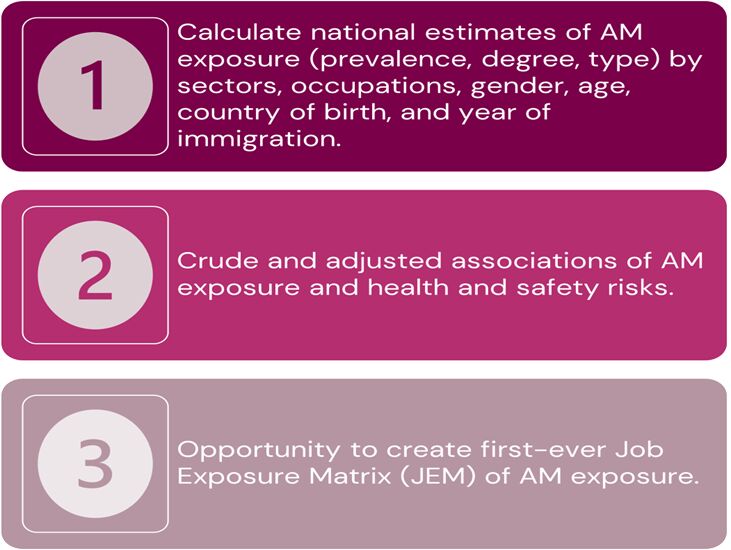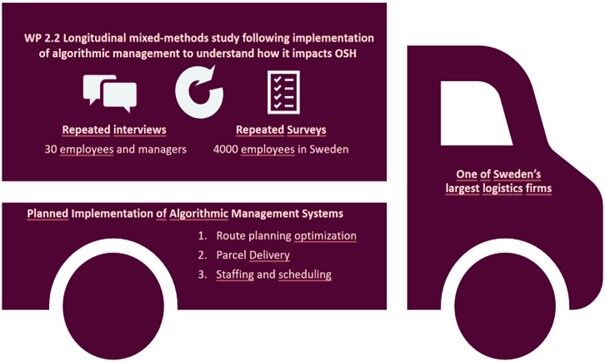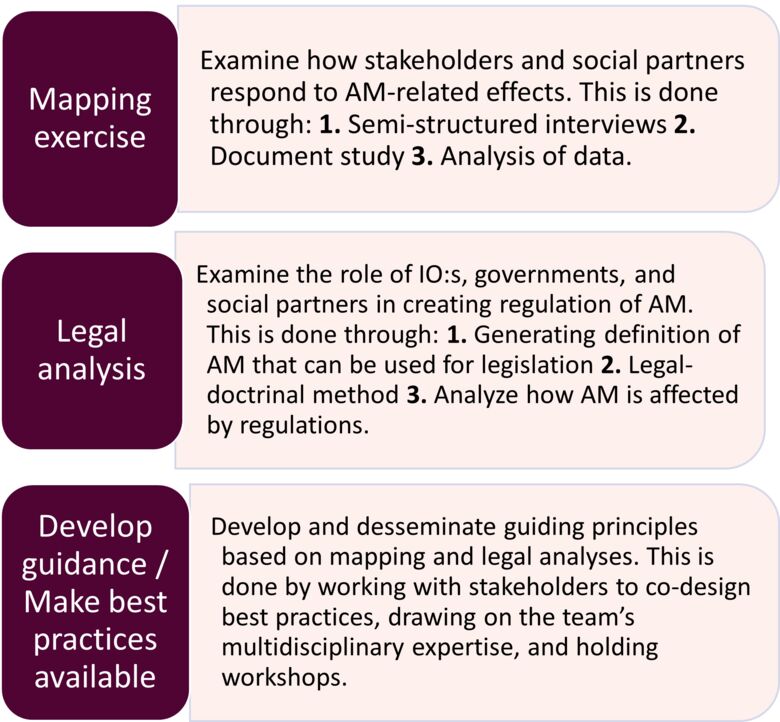ALGOSH: About the program
ALGOSH: Algorithmic management at work - challenges, opportunities, and strategies for occupational safety and health and wellbeing
A Research Program funded by Forte (2023 – 2029)

Program overview
Algorithms are at the forefront of a transformative shift in the World of Work, profoundly influencing work dynamics, organizational structures, and the work environment. Despite their profound impact, a substantial knowledge gap exists concerning algorithmic management (AM) and its repercussions on occupational safety, health, and wellbeing. This gap is particularly pronounced in non-platform work settings, where AM's prevalence is growing.
As the use of AM continues to expand across various economic sectors, it is imperative to investigate its effects on the wellbeing of workers. The overarching objective of the ALGOSH research program is to enhance our understanding of AM in non-platform sectors and its impact on the health, safety, and wellbeing of workers. Moreover, it aims to develop tools and strategies to mitigate associated risks. The three research aims of ALGOSH are:
- Facilitating the development of a standard for measurement of algorithmic management at work and related risks for health, safety and well-being.
- Increasing knowledge about the effects of algorithmic management on workers’ health, safety, and well-being.
- Investigating the balance of interests related to the control of algorithms in different legal contexts regarding occupational health and safety (OSH).
To accomplish this mission, an international and interdisciplinary consortium of researchers has been assembled. For our research to have maximum societal impact, the program also has a strong stakeholder involvement and support from trade unions, business organizations, international bodies, and government agencies. Their collective efforts will examine, discuss, and assess the opportunities and challenges posed by algorithmic management, fostering a safer and healthier work environment for all.
The program applies multiple methods including quantitative, qualitative, literature reviews and participatory research. It is funded by the Swedish Research Council for Health, Working Life and Welfare, Forte, and runs from 2023-2029.
Work packages
Reflecting the three research aims, the program is divided into three interconnected but distinct work packages.
Work Package 1
Standard for Measurement of Algorithmic Management (AM) at Work and Related Risks for Occupational Safety and Health (OSH)
Research into algorithmic management (AM) is relatively new. There is no established definition of the concept and a lack of data on the consequences for health, safety, and wellbeing. Acknowledging this problem, the focus of WP1 is to develop a harmonized definition of AM that can be operationalized into measurable observations. The aim is to find indicators that measure the health-related effects of AM on workers and enable systematic data collection. Thus, WP1 addresses 3 research questions:
- How has AM been defined in research and policy?
- Are there differences in meaning across industries, types of work, and national contexts?
- How can AM related data collection and infrastructure be improved and harmonized?
To address these questions, the research group will conduct interviews with workers, OSH inspectors and employers. This will inform the elaboration and validation of a survey instrument which can be used for systematic and standardized data collection.
Work Package 2
Exploring the Effects of Algorithmic Management (AM) on Occupational Safety and Health (OSH)
The focus of the WP2 is to investigate the effects of algorithmic management (AM) on occupational safety, health, and wellbeing. Using a multi-methods approach, the 3 following research questions are addressed:
- What aspects of work are impacted by AM?
- Does AM lead to health and safety risks? If so, which risks and what are the mechanisms of action?
- Are risks found in traditional work settings exacerbated by AM, if so which risks and what are the mechanisms of action?
Using a multi-methods approach the effects of AM will be studied through an online survey in three sectors in Sweden – using the survey instrument developed in WP1 - and a longitudinal case study in a Swedish logistics company. The survey results inform the quantitative data analysis, which consists of three parts:

The longitudinal case study, on its hand, is carried out using a combination of repeated interviews and surveys to capture both associations and nuances of AM’s effects over time.

Work Package 3
Co-designing Algorithms at Work – Guiding Human-centered AM and Balancing Interests in a Tripartite OSH Context
If designed well, AM could promote workers’ wellbeing. Co-designing AM implementation could thus prove beneficial to workers’ mental and physical health as well as business productivity. Informed by the definition of AM developed in WP1 and knowledge and data about AM’s effects on occupational safety and health from WP2, WP3 investigates practical methods to guide human-centered AM and explores policy-oriented interventions. WP3 focuses on three research questions:
- How do different stakeholders respond to challenges and opportunities related to the effects of AM on occupational health, safety, and wellbeing?
- How can labor inspectors and OSH experts assess and provide advice and support related to AM-related physical and cognitive strain and psychosocial risks?
- How can OSH-related provisions be mobilized to carry out anticipatory and participatory actions to mitigate adverse effects of AM?
To answer these questions, WP contains different elements:
- First, an exploratory scoping review of stakeholder interventions to reduce negative and strengthen positive aspects of AM.
- Second, since limited knowledge makes it difficult for experts and labor inspectors to advise employers on AM-related risks, we will develop an easy-to-use checklist for inspection and evaluation of AM-related risks, i.e. physical, cognitive, and psychosocial strain. The checklist will be informed by Cognitive Ergonomic Assessment (CEA) and developed in 1-2 companies in Finland and Sweden.
- Third, we will enhance knowledge about various actors’ approaches and interests regarding regulating AM for the benefit of workers’ OSH. This will be done using a mapping exercise, legal analysis and through developing best practices.

